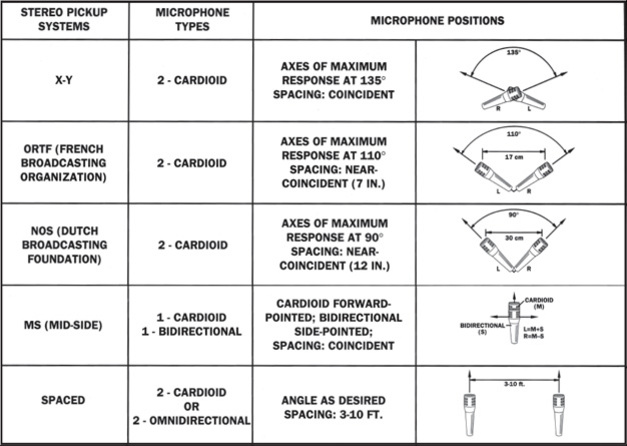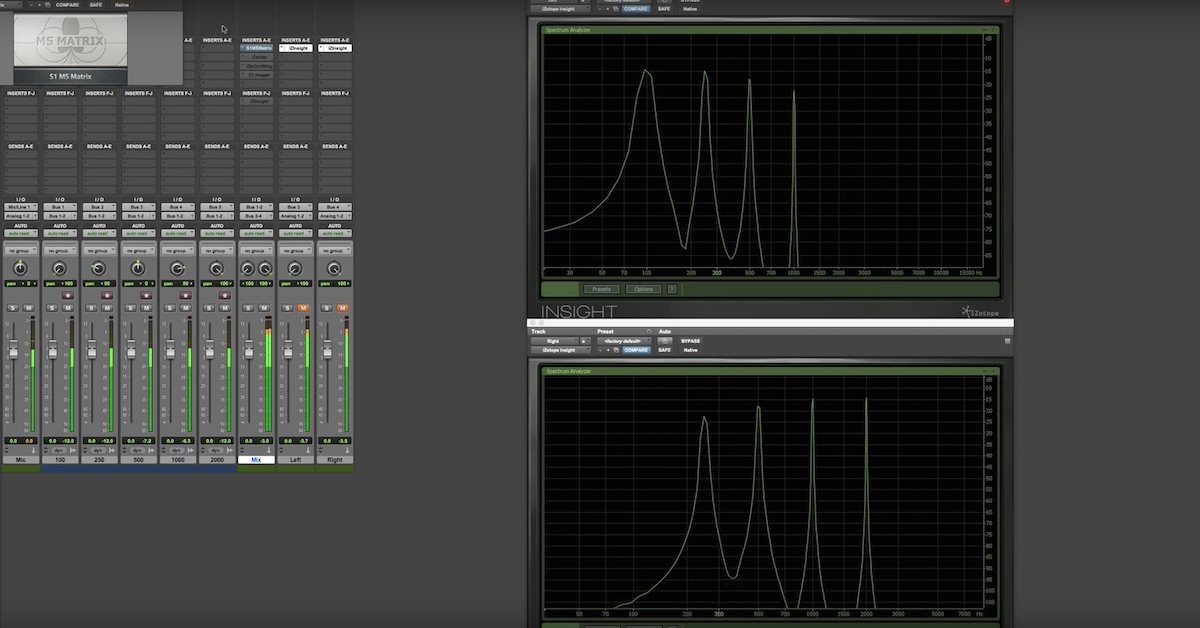4 Common Stereo Microphone Techniques
Article Content
Stereo miking techniques can be used to create the perception of width, space, and location. Recording different signals for left and right stereo channels mimics the function of two human ears.
Our auditory system perceives width, space, and location by comparing the sounds captured by our ears. Because our two ears are in different physical locations, we capture two different signals.
It is believed that our brains analyze a few types of differences between the signals capture by our left and right ears. Interaural Timing Differences (ITDs) occur because sounds produced physically closer to our left ear arrive at the left ear before arriving at the right ear, and vice versa. Interaural Intensity Differences (IIDs) occur because our head absorbs some of the energy of sound traveling to our ears.
Stereo miking techniques can replicate the ITDs and IIDs that occur naturally. However, each technique is a little bit different. There are advantages and disadvantages to consider as an audio engineer when placing microphones.
Here are the perceptual results of common stereo miking techniques.
1. Spaced Pair
By placing two microphones several feet apart, a wide stereo image can be achieved. The ITDs and IIDs between the microphones will be substantial. In fact, these differences can be extreme.
The timing differences between the microphones will be greater than what occurs naturally between ears that are only separated by several inches. A similar thing can occur for level differences depending on the location of the sound source.
Therefore, the spaced pair miking technique can be used to create an unnatural stereo image. Sometimes this is exactly what you need.
2. X/Y, Coincident
One issue that occurs when there are timing difference between signals is phase cancellation. When two microphones are separated in physical space, there will be destructive interference between them at certain frequencies.
The stereo miking technique that attempts to avoid this problem is the X/Y technique. By placing the capsules of the microphones in the same physical location, there will be no timing differences.
The directional patterns of the microphones will create intensity differences between the signals.
The drawback to the X/Y technique is that it does not create a wide stereo image. This is because the important IIDs are missing.
3. ORTF, Near-Coincident
A stereo miking technique that was designed to have advantages of the spaced pair and X/Y technique, without the disadvantages, is called near-coincident. Another name for the same technique is ORTF, an abbreviation for Office de Radiodiffusion Télévision Française, who devised the technique.
In this technique, two microphones are placed close to each other, but not in the identical space. In fact, the two microphones are typically positioned to be in a similar relative position as human ears on a person’s head. The distance, direction, and angle are all supposed to replicate human ears.
Therefore, the microphones will capture both ITDs and IIDs. Additionally, these differences captured by the microphones are similar to what would be captured by ears in a similar location. The result can sound very natural.
4. Mid-side
The mid-side stereo miking technique is somewhat unique in comparison to the aforementioned techniques. Rather than using one mic to capture the left channel and one mic to capture the right channel, the mid-side technique uses one uni-directional mic to capture a signal to be panned to the center and one bi-directional mic to capture a signal panned to the sides.
The result is a recording where the relative amplitude of the two signals determines the stereo width. When the center is louder, the stereo width is narrow. When the sides are louder, the stereo width is wider. This miking technique gives the engineer an extra degree of freedom to control the stereo image.
One thing to be aware of with mid-side miking is mono compatibility. When the left and right channels of a stereo signal are summed to mono, the sides will cancel. Therefore, be careful and intentional when setting the relative levels of the mid and side channels if your mix could ever be converted to mono.






